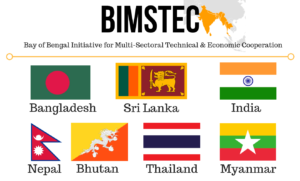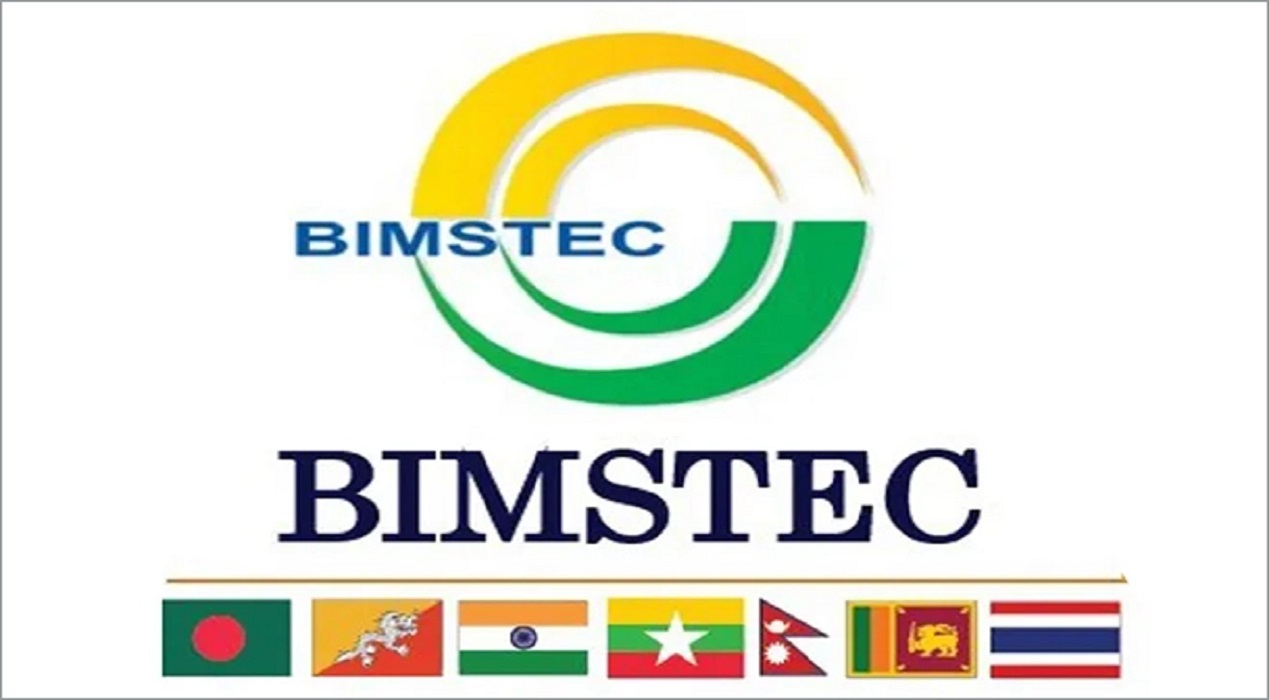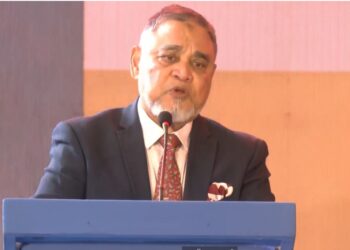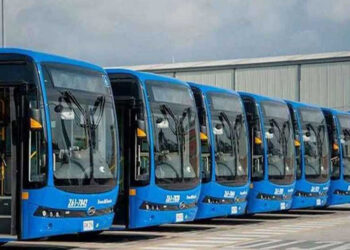Intro Of BIMSTEC
BIMSTEC (Bay of Bengal Initiative for Multi-Sectoral Technical and Economic Cooperation) is a powerful and influential regional platform which is working to advance economic cooperation, connectivity and sustainable development across South and Southeast Asia. Established in 1997 , it has now evolved into an unstoppable force among seven countries—Bangladesh, Bhutan, India, Myanmar, Nepal, Sri Lanka, and Thailand.With a combined population of 1.7 billion people, more than 20% of the world’s population, and a combined GDP exceeding $3.5 trillion. BIMSTEC is not just a regional initiative but is poised to play a critical role in shaping the future regional architecture of the Indo-Pacific.
As an organization that encourages collaboration across several industries it is essential for tackling shared problems and seizing group possibilities. While emphasizing BIMSTEC’s significance in the current geopolitical and economic environment. This article explores the organization’s history, structure, goals, recent advancements, and possibilities for the future.
Historical Background and Evolution
BIMSTEC was originally established on June 6, 1997 with Bangladesh, India, Sri Lanka and Thailand Economic Cooperation. With the inclusion of Myanmar in 1997 and later Nepal and Bhutan in 2004. The organization was renamed BIMSTEC to reflect the broader scope and diverse participation. The organization was created to bridge South and Southeast Asia, promote technical and economic cooperation, and serve as a vehicle for regional integration.
The BIMSTEC Charter, signed in March 2022, was a landmark development. It gave the organization a formal structure, clarified its objectives, and laid the foundation for future legal and institutional frameworks.
Vision and Objectives
- Accelerated economic growth
- Shared development strategies
- Mutual technical assistance
- Regional peace and stability
- Poverty alleviation
- Environmental sustainability
Structural Framework
BIMSTEC’s uniqueness lies in its geographical diversity—it brings together South Asia (Bangladesh, Bhutan, India, Nepal, Sri Lanka) and Southeast Asia (Myanmar, Thailand). This dual membership has turned BIMSTEC into a vital bridge between the two dynamic regions. It may use each country’s assets and promote a cooperative approach to regional development due to this multi-sectoral strategy. Remarkably, each member country leads one or more of the organization’s 14 priority sectors, making regional cooperation more purposeful and effective.

Bangladesh
Trade, Investment and Development
Sub-sectors: Blue Economy
Bhutan
Environment & Climate Change
Sub-sectors: Mountain Economy
India
Security
Sub-sectors: Counter-Terrorism and Transnational Crime, Disaster Management, Energy
Myanmar
Agriculture and Food Security
Sub-sectors: Agriculture, Fisheries & Livestock
Nepal
People-to-People Contact
Sub-sectors: Culture, Tourism, Poverty Alleviation, People-to-People Contact (forums of think tanks, media etc.)
Sri Lanka
Science, Technology & Innovation
Sub-sectors:Technology, Health, Human Resource Development
Thailand
Connectivity
Bangladesh Ignites It’s Future
The Bay of Bengal is on the brink of a new era and at the heart of this transformation is Bangladesh. Bangladesh has received the BIMSTEC chairmanship for the next two years from Thailand. Thailand Prime Minister Paetongtarn Shinawatra handed over the it’s chairmanship to Chief Adviser Professor Muhammad Yunus at the end of the BIMSTEC Summit in Bangkok. Driving a revolution of regional cooperation like never before. The organization is poised to become a game-changer in the geopolitics of South and Southeast Asia.
Dr. Yunus’s appointment marks a pivotal shift for BIMSTEC, which has long struggled with bureaucratic inertia. Now, under his leadership, BIMSTEC is shedding its old skin to embrace a future defined by inclusive innovation, sustainable development, and people-powered progress. Known globally for his work in microfinance, Yunus has already begun infusing his visionary approach into the very core of BIMSTEC’s mission.
Dr. Yunus has long believed that development should not merely be about economic growth but about empowering people to lift themselves out of poverty, unemployment, and injustice. This vision is now at the heart of BIMSTEC’s renewed strategy under his chairmanship. His leadership brings a refreshing perspective—he doesn’t just talk about solving problems; he tackles them head-on with solutions that work on the ground.
Under Yunus, BIMSTEC is moving beyond traditional forms of regional cooperation. While trade, connectivity, and security remain central, the focus is shifting to inclusive growth and social entrepreneurship. With his influence, BIMSTEC is embracing a social business model, where the goal is not simply profit but purpose driven impact. This model calls on businesses, governments, and individuals to align their interests with the broader goal of sustainable development and social equity.
One of his most compelling goals as BIMSTEC Chairman is the integration of regional economies through technology and green innovation. Bangladesh is already emerging as a regional leader in tech startups and renewable energy projects, and under Yunus’s leadership, BIMSTEC is pushing for a more connected and technologically advanced region. Initiatives such as smart cities, green energy solutions, and cross-border digital platforms are at the forefront of BIMSTEC’s agenda.
But his leadership is about more than just policy it’s about the people. it’s member countries represent over 21% of the world’s population. Yunus said on social business is a call to action for the private sector and civil society to join forces with governments to tackle poverty, climate change and education across the region. This collaborative spirit is redefining the way the region thinks about cooperation, turning the traditional top-down model into a bottom-up movement of change.
With Yunus as Chairman it is no longer just another international organization. It’s a bold, dynamic force for regional unity, one that promises to turn the Bay of Bengal into a symbol of shared prosperity and collective progress. This is a future where Bangladesh, under Yunus’s visionary leadership, stands at the forefront—not just as a participant, but as a leader in shaping the future of the Bay of Bengal. It’s SECRETARIAT in Bangladesh
Objectives
The core objectives of BIMSTEC include:
- Promoting active collaboration and mutual assistance in matters of common interest.
- Accelerating economic growth and social progress in the region.
- Encouraging equality and partnership.
- Fostering harmonious development through cooperation in various sectors.
- Ensuring peace and stability through shared efforts in security and governance.
These objectives are grounded in principles of sovereign equality, territorial integrity, non-interference in internal affairs, and peaceful coexistence.
Strategic Importance
The Bay of Bengal region is strategically vital. It serves as:
- A maritime trade hub between South, Southeast, and East Asia.
- A route for energy supplies and critical goods.
- A zone with vast potential in blue economy, fisheries, and marine resources.
Given increasing geopolitical rivalries specially in the Indo-Pacific. It provides a framework for regional players to balance interests, foster economic growth, and reduce dependency on external powers.
Recent Developments
The 6th BIMSTEC Summit, held in Bangkok from April 2–4, 2025, marked a significant milestone in regional cooperation and strategic direction. At the heart of this year’s summit was Nobel Laureate Professor Muhammad Yunus who served as the Chief Adviser in Bangladesh offering visionary guidance to BIMSTEC agenda.
Professor Yunus presented four groundbreaking proposals as states government owner of Bay of Bengal. These four proposal is youth empowerment, inclusive development, regional innovation and sustainable practices. His humane and forward thinking ideas received overwhelming support from member states and are expected to play a key role in shaping the future roadmap of BIMSTEC.
The summit took place in the wake of a devastating 7.7-magnitude earthquake that struck Myanmar and Thailand, claiming over 3,000 lives. In response to this tragedy, Professor Yunus called for the creation of a more integrated and robust disaster management and emergency response mechanism within the BIMSTEC framework.
Read more: Bitcoin: A Revolutionary Asset or a Volatile Gamble?
On the final day of the summit Professor Yunus echoed his commitment to transforming BIMSTEC into a more inclusive and humanitarian platform for regional progress, aligning leadership with purpose and people.
Institutional Weaknesses
Despite its potential it faces institutional and structural challenges, including:
- Absence of a permanent secretariat with adequate staffing and resources.
- Lack of binding enforcement mechanisms.
- Overlapping agendas with other regional groupings.
Security and Political Dimensions
Security cooperation specially in the fight against terrorism and transnational crime, remains a top priority for BIMSTEC. India leads this sector and has emphasized the importance of intelligence sharing, capacity building, and joint training.
The presence of Myanmar’s military leader, Senior General Min Aung Hlaing, at the 2025 summit was notable, marking one of his few international appearances since the 2021 coup. While his attendance drew criticism from some quarters, it also highlighted the complex political dynamics within the group. BIMSTEC’s approach to political issues has traditionally been pragmatic, focusing on cooperation over confrontation.
Economic Integration and Trade Cooperation
BIMSTEC members are working toward creating a Free Trade Area (FTA), which has been under negotiation since 2004. Although progress has been slow, there is renewed momentum to finalize the agreement, especially in light of shifting global trade patterns.
The region holds immense potential for intra-regional trade, given its large and growing markets, complementary economies, and strategic location. Improved transport connectivity through initiatives like the BIMSTEC Motor Vehicle Agreement and the Coastal Shipping Agreement are expected to further facilitate trade and investment.
Energy and Infrastructure Development
Energy cooperation is another vital area for it with Myanmar. Hydropower, renewable energy, and energy grid connectivity have been major areas of focus. Cross border power exchange agreements, particularly between India, Bhutan, and Nepal, serve as examples of successful collaboration.
Infrastructure development, including road, rail, and port projects, is essential for enhancing physical connectivity and boosting economic activity. BIMSTEC members are increasingly investing in infrastructure to bridge gaps and reduce logistical barriers.
Cultural and People to People Exchanges
BIMSTEC places strong emphasis on fostering cultural ties and promoting tourism. Initiatives such as student exchange programs, joint cultural festivals, and simplified visa processes aim to bring people closer and build mutual understanding.
The region’s shared history marked by common linguistic, religious, and cultural traditions. It provides a solid foundation for enhancing soft power diplomacy. People-to-people contact also helps build trust. Which is crucial for long-term cooperation.
Environmental Sustainability and Climate Change
Given the region’s vulnerability to climate related disasters, BIMSTEC has prioritized environmental cooperation. Bangladesh as the lead country for Climate Change, is spearheading efforts to develop a joint action plan for climate adaptation and mitigation.
Disaster risk reduction, early warning systems, and sustainable resource management are key components of BIMSTEC’s environmental agenda. The recent earthquake has added urgency to these efforts.
Challenges and Limitations
Despite its promising vision, BIMSTEC faces several challenges:
- Lack of a clear institutional structure and adequate funding.
- Slow implementation of agreements and action plans.
- Political differences and bilateral tensions among member states.
- Limited visibility and public awareness of BIMSTEC’s role and benefits.
These issues have often hindered the organization’s ability to function efficiently and deliver tangible outcomes.
Future Prospects
Looking ahead of BIMSTEC has significant potential to emerge as a key regional grouping. To realize this potential, the organization must:
- Finalize and implement it’s Free Trade Agreement.
- Strengthen the Secretariat and provide it with adequate resources.
- Enhance collaboration in emerging areas like cybersecurity, digital economy, and artificial intelligence.
- Promote inclusivity by engaging youth, civil society, and the private sector.
- Foster greater synergy with other regional organizations like ASEAN and SAARC.
A strategic plan and renewed political will will enable BIMSTEC to significantly contribute to the development of a prosperous, stable, and sustainable Bay of Bengal region.
Conclusion: A Future Full of Promise
BIMSTEC is more than a regional organization. It is a vision of shared destiny for the Bay of Bengal community. As we stand at the crossroads of a rapidly evolving global landscape, the Bay of Bengal offers an exciting blueprint for regional collaboration and prosperity. This vital maritime region, with its rich cultural heritage, strategic importance, and untapped economic potential, is poised to become a hub of innovation, cooperation, and sustainable growth.
With its unique framework of multi-sectoral cooperation, the seven member nations are already laying the foundation for a more connected, peaceful, and resilient future. The shared commitment to economic integration, climate resilience, and security cooperation ensures that the Bay of Bengal will not just be a geographical feature, but a symbol of unity and collective progress.
As the world navigates challenges such as climate change, geopolitical tensions, and technological transformations, it holds the key to unlocking new opportunities for the region. By working together the countries of the Bay of Bengal can harness their strengths, address common challenges and create a future where prosperity flows as freely as the tides that shape this remarkable body of water.
The journey ahead is one filled with hope, promise and a shared vision for a harmonious thriving Indo-Pacific. As cooperation deepens and new avenues for collaboration emerge the Bay of Bengal will undoubtedly continue to be a beacon of regional unity and progress.


















